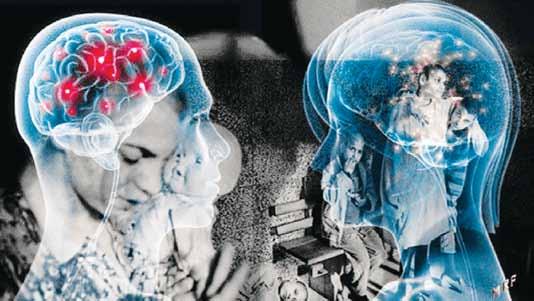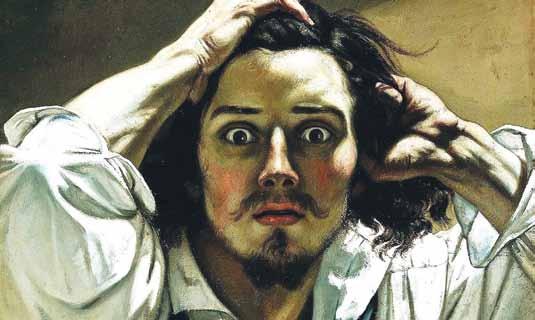
16 minute read
briGhtnEss crEativity and psychopatholoGy
SCIENCE
DR. WÁzCAR VERDUzCO FRAGOSO
Medical psychiatrist and psychotherapist Asociación Autónoma del Personal Académico de la UNAM. Faculty member of the undergraduate and graduate programs of psychiatry, Facultad de Medicina, UNAM
Translation: Maestro Sergio Sánchez Padilla.
Fuente: http:// www.twcenter.net/ forums/showthread. php?377843-Namethat-historical-figure!/ page87 Introduction
Insanity has been portrayed in all cultures along the history of human kind; in most ancient texts it is identified either as a divine punishment or an excitation linked to artistic creation. Aristotle stated that there is no great genius without some touch of madness. Plato claimed that madness is superior to a sane mind (sophrosune) for the one is only of human, but the other of divine origin; in addition, he maintained that creativity is a divine madness, a gift from the Gods; this shows that since antiquity there is a coincidence between madness and creativity, which has received substantial research nowadays. Muhammad considered those mentally illed beings loved by God… knowers of the truth. Descartes disqualified madness, attributing it to an error of reason, which was heavily influential to its modern and contemporary conception. Insanity is commonly linked to a behavior away from social convention, without limits, i.e. lacking rules or norms; when extrapolated to art (if it has any effect on someone who contemplates the piece of art) it is assumed that it reflects the ideas, emotions and concerns of the artist. Psychiatry has identified a link between creativity and “madness.”
SCIENCE
Brightness, creativity and psychopathology This is confirmed by the higher presence of mental illness amongst creative people in comparison to the general population; historical individuals ratify this. Through time, “madness” is manifest in art along different lines; a question emerges nonetheless: being a genius intensifies or thwarts psychopathology? Or are there other relevant factors having an impact in both? Some arguments point that this mania (“insanity”) is responsible for the presence of an “ideas jailbreak” (a flux of incessant ideas that in some cases may even distort reality) thanks to a state of “hyperconsciousness” facilitated by a decrease of the sensoperceptual threshold and psychic “lack of inhibition”; these latter are considered dangerous for their behavior is of excitement and recklessness. In the opposite end lie the melancholic (from the Greek melaina chole, “black bile”), solitary and apathetic –Aristotle attributed them the gift of intelligence. During the episodes of depression, the process of thinking and psychomotor functions are slowed down, which is reflected in the suffering portrayed in the work of artists who display this trait. In the eighteenth century, “melancholia” and “mania” are recognized as inseparable; the one follows the other in a cycle; nowadays,
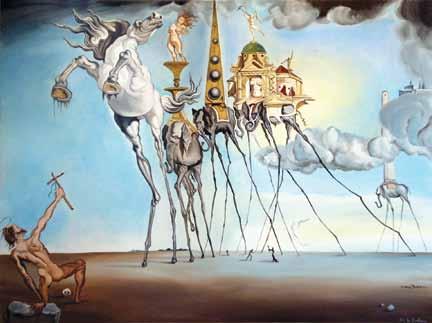
La tentación de San Antonio. Salvador Dalí. Fuente: http://cereza81.blogspot. mx/2006_02_01_archive.html
this is called bipolar disorder. “Insanity” in literature is conveyed through words. In some works from Shakespeare, he projects in his characters that the lunatic, the lover, and the poet are of imagination all compact. For Proust, Everything great in the world is done by neurotics… but we do not know what they cost those who wrought them in sleeplessness, tears, spasmodic laughter, rashes asthmas, epilepsies, and the fear of death, which is worse than all the rest. In painting, “insanity” is expressed through the artists’ eyes. During the Renaissance starts the depiction of this “madness”; by way of illustration, in Hieronymus Bosch’s painting the Ship of Fools, “insanity” is depicted as the sin of lust, and gluttony is equated to a life of squandering. Below, there is a brief list of some prominent characters of the arts and sciences who suffered of some kind of mental disorder; presumably, their achievements would not have been possible without some touch of madness.
SCIENTISTS
ISAAC NEWTON (1642-1727)
English physicist, philosopher, inventor and mathematician, he is considered the peak of the Scientific Revolution. He is author of the Principia Mathematica, in which he describes the law of universal gravitation and establishes the basis for classical mechanics through the laws that bear his name: Newton’s first law (of inertia); Newton’s second law (force
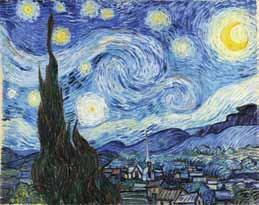
La noche estrellada. Vincent Van Gogh. Fuente: http://www. vangoghgallery.com/printsandposters/van-gogh-top-20.html
is equal to mass times acceleration); and Newton’s third law (for every action, there is an equal and opposite reaction). Also notable are his works on the nature of light and optics as well as the development of calculus. In spite of all these achievements, he showed signs of mood inconsistency and psychotic symptoms. It has thus been suggested that he suffered bipolar disorder, oscillating from depression to mania (“madness”), as well as schizophrenia –given the delirious ideas seen in his letters. Throughout his life, he traversed several “nervous crises”, characterized by intense ire.
Ludwig Boltzmann (1844-1906)
Austrian physicist who gained scientific recognition for his works in statistical mechanics, his explanation of the kinetics of gases and the structure of atoms. He suffered frequent depressive episodes –stemming from the fact that his ideas were not initially accepted– in alternation with periods of expansiveness and good mood, committing suicide before his theories got confirmed.
George Cantor (1845-1918)
Russian mathematician who developed the Set Theory. The constant confrontations with his detractors catalyzed depressive states that at times required hospitalization.
Writers William Blake (1757-1827)
English poet and plastic artist (painter and printmaker), who has been qualified simply as “crazy”. His first piece of literature to receive recognition was Songs of Innocence. He suffered depressive episodes with psychotic symptoms described as a deep well of melancholia, a melancholia without any reason, followed by periods of illumination and great creativity, suggesting a bipolar disorder.
George Gordon Noel Byron (Lord Byron, 1788-1824)
English poet, famous for his talent and eccentricity, some of his relevant works include Don Juan, The Giaour and The Corsair. During the course of his life, he experienced periods of exaltation alternating with periods of hopelessness (suggestive of bipolar disorder): I am very unhappy, all the places seem all the same to me, I cannot keep on living like this; I have no appetite, I cannot rest; I can neither read, write nor find relief.
Edgar Allan Poe (1809-1849)
North American writer, he was an extraordinary exponent of detective fiction and horror literature. He was addicted to alcohol and other toxic substances: my enemies referred the insanity to the drink rather than the drink to the insanity. He showed recurrent depressive episodes, with an attempt of suicide in 1848, being concluded that he suffered bipolar disorder.
Herman Melville (1819-1891)
North American writer, author of Moby Dick. Throughout his existence, he was tormented with depression, alternating those periods of melancholia with exaltation, in which he turned expansive and highly productive.
Charles Baudelaire (1821-1867)
French poet, translator and art critic, it is considered that he suffered bipolar disorder; this latter was called circular insanity in the middle of the nineteenth century.
Leon Tolstoi (1828-1910)
Russian novelist, author of War and Peace, and Ana Karenina. In his narrations, he vividly describes his vital exhaustion, his melancholia, his suicidal ideas, while he carried out an apparently happy and gratifying life. He wrote in his diaries more than ever, I was respected by friends and acquaintances, praised by strangers and I could say without fear of being wrong that I already had some notoriety… life kept still and turned sinister… I experience no pleasure, I do not hope for anything in life. He died of a lung edema.
William Blake. Fuente: http:// orwell.ru/people/blake/img/William_Blake_by_Thomas_Phillips.jpg
Vivien Leigh. Fuente: https://academiaparaninfo.files.wordpress. com/2016/11/vivien-leigh-03.jpg

Robert Schumann. Fuente: https:// upload.wikimedia.org/wikipedia/ commons/f/fa/Robert_Schumann_1839.jpg
SCIENCE
Brightness, creativity and psychopathology
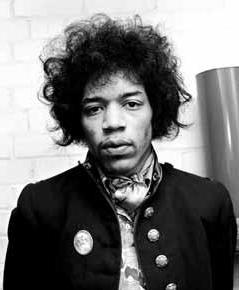
Jimmy Hendrix. Fuente: http://wedootv.com/celebrity/jimi-hendrix/
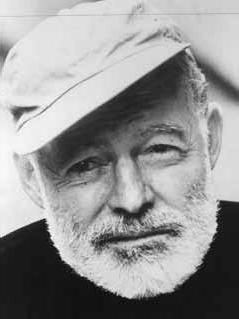
Ernest Hemingway. Fuente: http:// www.peoples.ru/art/literature/ prose/belletristika/hemingway/ Emily Dickinson (1830-1886)
North American poet, she lived in isolation as a self-decision. Her work was recognized after her death. Some years before her decease, she wrote the doctor says that I have ‘nervous prostration’, an illness of anxiety and depression.
Virginia Woolf (1882-1941)
English writer, cofounder (with her husband) of the Hogarth Press. It has been documented that she had hereditary antecedents of depression and bipolar disorder from her father´s family. She had her first depressive episode at the age of thirteen, following the decease of her mother. When her father died, she was twenty-two and suffered auditory hallucinations. She wrote the beauty of the world has two blade edges, one of laughter and one of anguish; together, they both cut your heart in two. She committed suicide at the age of fifty-nine.
Eugene O’neill (1888-1953)
North American playwright, Nobel laureate of literature in 1936, one of his distinguished works is Long Day’s Journey into Night. He suffered from Parkinson’s disease and depression: this despondency so exuberant stuns me in exceedingly manner… had the doctors not explained to me that this is part of my disease, I would have said that I had turned crazy.
Ernest M Hemingway (1899-1961)
North American writer, Nobel laureate of literature in 1954. He suffered alcoholism and depression. During his last years, he showed paranoid ideas; he required electroconvulsive therapy. He committed suicide in 1961: if I can’t exist on my own terms, then existence is impossible.
Theodore Roethke (1908-1963)
North American poet who also showed symptoms associated to bipolar disorder.
A Philosopher Federico Nietzsche (1844-1900)
German philosopher who defined himself as the philosopher of the hammer; he was perseverant to impose his ideas, even to the cost of his mental health. He faced recurring depressive episodes alternating with periods of exaltation. For his contemporary critics, he was strange and dubitative. He published his first work at the age of twenty-seven: The Birth of Tragedy.
Painters Hugo Van Der Goes (1438-1482)
Flemish painter, he was ordered monk in an Augustinian convent near Brussels, where he suffered a severe depression before his death. His caretaker, Gaspar Ofhuys, mentions: Indeed, only God can clear what he endures, to describe the symptoms of profound sadness, anguish, hopelessness and suicidal ideas that had no apparent reason as well as a sluggishness such that he had no liveliness to eat or even get dressed. Goes’ peak work is the Portinari Triptych.
Vincent Van Gogh (1853-1890)
Dutch painter, author of 2,500 pieces of art, 27 of which are self-portraits, 148 aquarelles and 1,600 drawings. He suffered convulsive crises, auditory and visual hallucinations, as well as regular depressive episodes. His mental illness was worsened by the third decade of his life, pushing him to self-mutilation and necessitating psychiatric hospitalization. He finally committed suicide at the age of thirty-seven. His work Wheatfield with Crows has been interpreted as an omen to his suicide. Several diagnoses have been casted on him, such as epilepsy, schizophrenia, intoxication from turpentine, schizoid personality, epileptoid psychosis and bipolar disorder.
Paul Gauguin (1848-1903)
Postimpressionist painter born in Paris, as a stock broker, he started painting in his free time. He presented repeated depressive episodes and tried to commit
suicide following the death of one of his daughters. He died at the age of fifty-four.
Edvard Munch (1863-1944)
Expressionist painter born in Norway, his most famous work is The Scream, which reflects the anxiety and depressive mood that tormented him during his life: Ever since I remember, I have suffered a profound sensation of anxiety that I have tried to express in my art.
Salvador Dalí (1904-1989)
Surrealist Spanish painter, egocentric by self-definition, rebel, eccentric and disqualifier before the established norms, no mental illness was diagnosed on him despite the ideas displayed in his work: The clown is not I, but rather our monstrously cynical and so naïvely unconscious society that plays at the game of being serious, the better to hide its own madness. For I –I can never repeat it enough– am not mad. My sanity has even attained such a level of quality and concentration that there is no more heroic or prodigious personality in our century, and except for Nietzsche (who, however, died mad) there is no equivalent in previous ones. My painting bears witness to that.
Marcus Rothkowitz (Mark Rothko, 1903-1970)
Renowned painter of the so called beat generation, one of the founders of abstract impressionism –a movement that broke all the established tenets of western art–, which sought to express the unconscious urges as well as the dissatisfaction stemming from the lifestyle following the Second World War. Born in Russia and raised in the USA from the age of ten, his first works portray claustrophobic urban scenes plagued by hopelessness. He abused of alcohol and suffered continual depressive episodes without receiving any treatment: those who spill tears before my paintings undergo the same religious experience that I go through when I create
Through time, “madness” is manifest in art along different lines; a question emerges nonetheless: being a genius intensifies or thwarts psychopathology? Or are there other relevant factors having an impact in both? Some arguments point that this mania (“insanity”) is responsible for the presence of an “ideas jailbreak” (a flux of incessant ideas that in some cases may even distort reality) thanks to a state of “hyperconsciousness” facilitated by a decrease of the sensoperceptual threshold and psychic “lack of inhibition”; these latter are considered dangerous for their behavior is of excitement and recklessness

Eugene O’neill. Fuente: http:// belvoir.com.au/news/strangeinterlude/attachment/photoeugene-oneill/
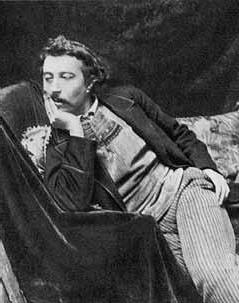
Paul Gauguin. Fuente; https:// vimeo.com/43894329
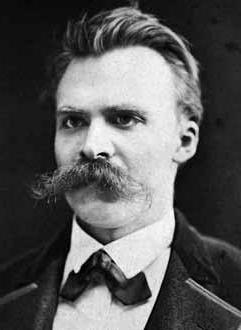
Federico Nietzsche. Fuente: https://en.wikipedia.org/wiki/Friedrich_Nietzsche
SCIENCE
Brightness, creativity and psychopathology them. He committed suicide in his studio in 1970.
Musicians Georg Friedrich Händel (1685-1759)
German composer of baroque music, the Messiah being his most popular work. He drank wine in excess and suffered symptoms of lead poisoning, which affects mood. He showed frequent depressive episodes, being diagnosed cyclothymic.
Ludwig Van Beethoven (1771-1827)
German musician, he suffered deafness, probably caused by the Paget disease. Like Händel, he had symptoms related to lead poisoning. He died from hepatic failure secondary to abusive consumption of alcohol. He suffered depressive episodes and suicidal thoughts alternating with periods of mania.
Wolfgang Amadeus Mozart (1756-1791)
Austrian composer and pianist. Some of his famous works include The Marriage of Figaro, Don Giovanni and The Magic Flute. He faced depressive and maniac episodes. He died at the age of thirty-five.
Hector Berlioz (1803-1869)
French composer of the Romanticism movement, creator of strong works such as the Fantastic Symphony and Requiem. He lived recurrent depressive episodes, describing them as the most terrible of all evils in life. He displayed weariness, loneliness, lethargy and absence of feelings: What can I tell you to give you an idea of this abominable malaise?
Robert Schumann (1810-1856)
German musician of the Romanticism movement. He revealed signs of psychiatric disorder since his early youth; he alternated periods of great creativity with hopelessness and suicidal thoughts. He spent two years in a sanitarium, being diagnosed of melancholia with delirium. He died at the age of forty-six.
Gustav Mahler (1860-1911)
German musician who frequently touched the subject of death in his work. It is believed that he was cyclothymic; he was treated by Sigmund Freud. His most famous composition is Symphony No. 2 (the Resurrection).
John Allen Hendrix (Jimmy Hendrix, 1942-1970)
An icon of rock music, guitar virtuoso, composer and interpreter. His extravagant lifestyle and mood swings suggest that he had bipolar disorder. His song Manic Depression narrates in detail how people with such disease live. He died at the age of twenty-seven from a psychotropic overdose.
Janis Joplin (1943-1970)
Singer of blues and rock music with a rebellious behavior before the social norms and self-destructive. She consumed drugs such as marihuana, LSD and heroin, which caused her death at the age of twenty-seven.
James Douglas Morrison (Jim Morrison, 1943-1971)
A legend of rock music self-proclaimed The Lizard King, with a high IQ and a deep enthusiast of literature and poetry. During his infancy he was a victim of psychological violence from his father. He consumed all sorts of drugs, which has been attributed as the source of his creativity and his particular concept of the world. As vocalist of The Doors, he was the center of countless scandals. His death at the age of twenty-seven is still a matter of controversy to this day.
Edith Piaf (1915-1962)
French singer. She used to state that her music was a tearless weep. She showed recurring depressive episodes, consuming alcohol and morphine in excess.
Actors
Rod Steiger (1925-2002)
An icon of Hollywood, His In the Heat of the Night performance won him the Academy Award for Best Actor in
1967; he was also nominated for his work in On the Water Front. He went through depressive episodes and suicidal thoughts: When you’re depressed, there’s no calendar. There are no dates, there’s no day, there’s no night, there’s no seconds, there’s no minutes, there’s nothing. You’re just existing in this cold, murky, ever-heavy atmosphere, like they put you inside a vial of mercury. And: It certainly isn’t that your mind goes blank. On the contrary, when you’re depressed, your mind beats you to death with thoughts. It never stops. And: How can depressed people like me get up in the morning and go to work to an office… from nine to six only because we have to pay our bills? Before such people I stand up.
Vivien Leigh (1913-1967)
British actress, starring in the films Gone with the Wind and A Streetcar Named Desire, she won the Academy Award for Best Actress for both of these latter. She suffered frequent depressive episodes alternating with maniac periods, some of them showing psychotic symptoms as well. She required hospitalization, electroconvulsive therapy and psychopharmacology treatment. She drank alcohol in excess and suffered chronic tuberculosis.
Woody Allen
North American director and actor, a prototype of the chronic depressed patient (dysthymic) who seems unable to enjoy life even in the good moments since his mind is set to focus on the negative. He uses his neurotic and depressive personality in his acting: My depression is what has moved me into philosophy and prompted me to read Kafka, Dostoyevsky and Bergman.
Conclusions
Madness always offers an access point in space to enter reality. Insanity is present in our everyday life and is expressed in the arts. Most researchers and physicians think that those with a psychopathology must receive a treatment and that the effect that such a condition has on creativity is liable to be improved. While science is not able to respond the question whether insanity is divine, it is necessary to give it a higher value and allow it to be expressed without censorship in the arts, which may eventually lead to a better understanding of this condition.
BIBLIOGRAPHy Andreasen N. Creativity and Mental Illness: A Conceptual and Historical Overview. En: Schildkraut & Otero (eds). Depression and the Spiritual in Modern Art. England, John Willey & Sons Ltd, 1996, págs. 2-14. Arte y depresión. Altibajos de los genios. Serie fascicular. Lundbeck. Artistas bipolares. Entre luces y sombras. Serie fascicular. GlaxoSmithKline. Celebridades con Trastorno Bipolar: Serie fascicular. Abbott. de Sivry S y Beccaria L. The Madness of Genius. En: de Sivry Sophie y Meyer Philippe (eds). Art and Madness. Paris, Editions Du Sextant Bleu, 1998. págs. 40-61. Genialidad de la psicopatología. Serie fascicular, Wyeth. González F. Psiquiatría en el arte. Barcelona, Ars XXI, 2006. Obiols J. Art and Creativity: Neuropsychological Perspectives. En: Schildkraut & Otero (eds). Depression and the Spiritual in Modern Art. England, John Willey & Sons Ltd, 1996, págs. 33-47. Redfield K. Mood Disorders, Creativity and the Artistic Temperament. En: Schildkraut & Otero (eds). Depression and the Spiritual in Modern Art. England, John Willey & Sons Ltd, 1996, págs. 15-32.


